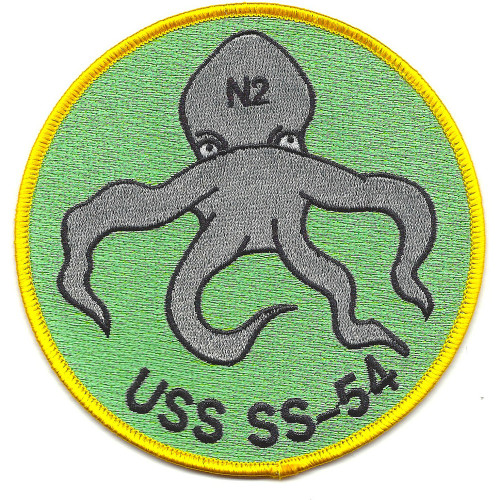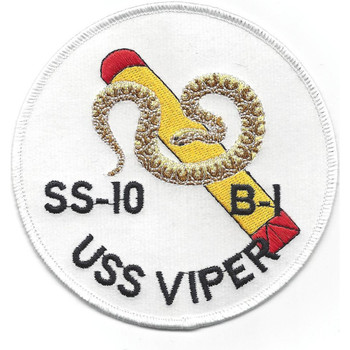Description
USS N 2 SS-54 N Class Submarine Patch (U.S. Navy) 4.5" x 4.5" Embroidered Patch with Sew-On Backing
Superior Materials: Made with premium polyester thread and durable twill fabric, ensuring long-lasting color and strength.
Advanced Embroidery Technology: Crafted using the most advanced embroidery machinery, guaranteeing intricate detail, sharp lines, and consistent quality every time.
Easy Iron-On Application: Features a heat-activated adhesive backing for quick, no-sew attachment. Simply position, iron, and press for a secure bond.
Versatile Use: Perfect for personalizing jackets, backpacks, uniforms, or any fabric surface that needs a touch of personality.
Durable and Washable: Designed to withstand everyday wear and occasional washing without fading or fraying.
Formations & Origins
USS N-2 (SS-54) was part of the N-class series of coastal defense submarines built for the United States Navy during World War I. Laid down in July 1915 and commissioned in September 1917, N-2 was constructed by Seattle Construction and Drydock Company. The N-class submarines, including N-2, were designed as small, maneuverable vessels intended to patrol American coasts and harbors during wartime. They represented a step forward from earlier submarine designs, incorporating lessons from earlier classes to improve endurance, performance, and reliability in a rapidly maturing warfare environment.
Notable Commanders
USS N-2 was commanded by a succession of early submarine officers—individuals considered naval pioneers—who operated under the shadow of war and technological infancy. These men were not only leaders but also test pilots of a sort, operating undersea vessels that were often experimental in nature. They played a crucial role in developing operational procedures and safety standards for future submarine operations.
Major Campaigns/Operations
Though USS N-2 was not deployed overseas, she played an active and important role during World War I by conducting coastal patrols and anti-submarine surveillance in American waters, particularly along the East Coast. Operating primarily from bases like New London, Connecticut, she was tasked with monitoring for German U-boats and defending key maritime chokepoints. After the war, N-2 remained in service performing training and experimental duties until her decommissioning in 1922.
Specialized Role/Equipment
As a coastal defense submarine, USS N-2 featured a diesel-electric propulsion system with a surfaced speed of around 13 knots and a submerged speed near 11 knots. She was armed with four 18-inch torpedo tubes, and her design included improvements in buoyancy control and internal layout compared to earlier submarines. Despite being compact and limited in range, N-2 was considered a reliable platform for short-range defense and tactical development during the war.
Acts of Heroism
While USS N-2 was not engaged in direct combat, her crew faced the ever-present dangers of early submarine service: mechanical failure, carbon monoxide poisoning, battery fires, and hull integrity concerns at depth. These sailors demonstrated consistent courage, operating in a claustrophobic, untested environment beneath the surface. Their quiet perseverance and daily risk-taking in ensuring the submarine’s patrol effectiveness and safety formed the bedrock of a submarine tradition that would evolve into one of the most elite domains of naval warfare.
Legacy & Notable Achievements
USS N-2 and her sister ships helped transform the U.S. Navy’s submarine force from a small experimental program into a credible arm of maritime defense. The lessons learned from her operations directly influenced the development of more capable and ocean-going submarines in the interwar period and beyond. While she may not be widely known today, N-2’s contribution to submarine tactics, engineering practices, and personnel training remains a foundational chapter in the story of America’s silent service.






